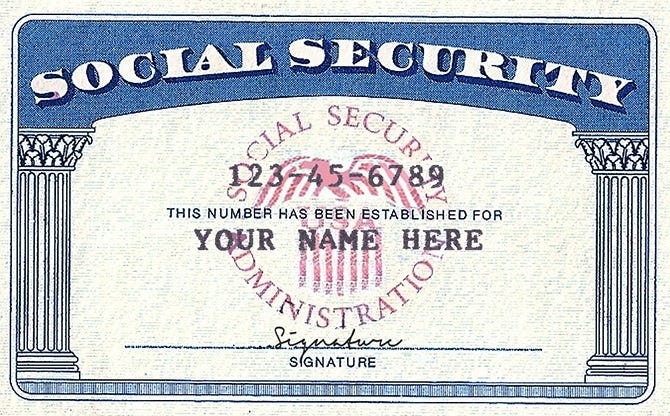The Complete Intern Guide
Start here if you're a Canadian student going to the US for an internship.
👋 Introduction
Congratulations! You probably clicked on this guide because you're a Canadian student who just received an internship offer in the United States, and are not sure where to start. This article will serve as a comprehensive walkthrough from start to finish of all the legal, financial, housing, and other topics that you'll likely encounter during your internship.
We're a group of alumni who have gone through this process before, and want to share our experiences, tips, and advice to help the future generation of students succeed during their internships. Whether this is your first time interning in the United States, or you've done it before but want to refresh your memory, we encourage you to save this page for future reference. Without further ado, let's begin!
🌎 J-1 visa
The Exchange Visitor Visa (J-1) is a non-immigration visa issued by the US Department of State. It enables foreign nationals to enter the US to teach, study, conduct research and gain work experience (i.e. internships).
First, let's identify what your situation is in terms of work authorization and whether you need a visa.
Are you a US citizen or US permanent resident?
Whether you hold citizenship or not from other countries, if you are a US citizen or US permanent resident (also known as being a green card holder), you already have work authorization in the US, without needing a visa. You can essentially skip this entire section on visas.
Are you a Canadian citizen?
If you're a Canadian citizen, you'll require work authorization in the US in the form of a J-1 visa. This involves arranging with a visa sponsor and submitting the required documents to them. They'll produce a DS-2019, DS-7002, and I-901 (SEVIS fee receipt), documents which you're required to bring once you cross the border officially on your J-1 visa.
Are you a non-Canadian, non-US citizen?
You'll still follow the steps above for Canadian citizens, except instead of getting your J-1 visa at the border, you'll need to make a trip to a US consulate.
J-1 visa sponsors
The company that you'll be interning for does not directly issue you the J-1 visa. They work with a visa sponsor, which is a separate company, that handles the legal paperwork and files an application to the US Department of State indicating your eligibility and admission into an internship program.
There are 2 main visa sponsors that you'll encounter: Cultural Vistas and Intrax.
Cultural Vistas is a non-profit 501(c)(3) organization that facilitates internships and other professional exchange programs, based in Washington DC, formerly based in New York City. They are typically used by large tech companies, and companies on both the west and east coasts.
1250 H Street NW Suite 300, Washington, DC 20005
Intrax is a for-profit company that also facilitates internships and other professional exchange programs, based in San Francisco. They are typically used by medium-sized companies and startups on the west coast.
600 California Street Floor 10, San Francisco, CA 94108
See a deeper comparison between these two visa sponsors.
When the visa sponsor reaches out to you, they will ask you to fill out an application with:
Your personal information, address, email and phone number
Your past work experience, former employers' addresses and former managers' contact information
Your level of education
Any non-tourist US visas (i.e. if this is not your first US internship, you'll need to provide all of your past DS-2019 documents, DS-7002 documents, visa stamps)
Confirmation of personal funds. Even if you're participating in a paid internship, it is recommended that you have access to at minimum $3000 USD in personal funds whether through your own savings or from your family. This is necessary because this amount will show up on your official DS-2019 documents later on. Although unlikely, it’s possible to be denied entry to the US on a J-1 if the border agents deem you to have insufficient funds
J-1 visa documents
After your visa sponsor has reviewed your application and accepted it, they will work with your host company to get the necessary information on their end, such as the address of the company, contact information, salary information, and training plan.
Once they receive the host company's portion of the application, your full application will be considered complete and placed in queue for final evaluation. This evaluation process takes about 10 business days for standard applications and 5 days for expedited applications, however this maybe longer due to COVID-19 delays.
At this point, the visa sponsor and the host company will work together to complete your DS-7002 Training Plan. The DS-7002 outlines your internship program at a high level, the skills, and technologies you'll learn during the internship as well as relevant contacts such as your future manager. Once the DS-7002 is complete, they will request a signature from both you and your manager, typically done over DocuSign or Adobe Sign.
Afterwards, the DS-2019 Certificate of Eligibility will be issued. This document officially confirms your visa sponsorship, and allows you to obtain a J-1 visa.
You'll be sent a package containing:
DS-2019 (aka Certificate of Eligibility)
DS-7002 (aka Training Plan)
I-901 (aka SEVIS fee receipt), this is the receipt acknowledging that your company has paid the fee for filing this application to the US Department of State
See a deeper look into what each of these documents mean.
Pre-departure tasks
Before you leave Canada for the US, there are still a couple of tasks you need to complete.
Travel Insurance
You'll need travel insurance. This is required by the US Department of State and border agents may ask you about having proof of insurance, and otherwise deny you entry. Keep in mind that healthcare in the US isn't free – getting into an accident could end up becoming a major expense.
Typically the visa sponsor provides their own insurance options, costing roughly $55-95/month. However, your school might already provide an insurance plan that covers you abroad. For example, at the University of Waterloo, if you have not opted out of the FEDS Health Plan, you will be covered with no additional expense. In this case, contact the school to obtain a Proof of Insurance document.
See this article for travel insurance comparisons.
Travel
Arrange for your travel to your new city. Figure out whether you're going to cross the border by car or by plane. Keep in mind that it is common for companies to arrange flights for you for free or reimburse a significant amount of your travel expenses.
See this article for travel advice.
Passport
Ensure that your passport is not expired.
Updated Resume
Keep your resume up-to-date.
See this article for resume advice.
🏠 Housing
You'll need a place to stay for the duration of your internship, and you'll need to have the address available once you arrive at the border, because the border agents will ask you for it.
Since there are many different avenues you can take to find housing and this differs depending on which city you'll be in, these options are described in a separate article.
See this article to learn more about finding housing.
🛬 Crossing the border
For Canadian citizens
At this point, you're ready to cross the border, obtain your J-1 visa stamp, and start your internship. Ensure that you have all of these documents and items ready:
DS-2019 (aka Certificate of Eligibility)
DS-7002 (aka Training Plan)
SEVIS fee receipt
Passport
Resume
Housing address
Boarding pass
Proof of insurance
Proof of at least $3000 USD, although typically border agents will simply ask how much cash-on-hand and savings you have, you should still be able pull up this information (i.e. show bank account on your phone) if needed
For non-Canadian, non-US citizens
Ensure you have all of the documents above. You'll still follow the steps above for Canadian citizens, except instead of getting your J-1 visa at the border, you'll need to schedule a visa appointment at a US consulate to get your passport stamped with the J-1 visa. Then at the border, you can show the same documents and the stamp.
See a list of US consulates in Canada.
When you're at the border, tell the border agent that you are "training in the US for an internship under a J-1 visa." Do not say that you are “working”. Your visa sponsor will warn you about this explicitly. Under the J-1 visa, you are technically not "working" but "training".
I-94
Arriving by land
If you cross the border by car, you'll receive a J-1 visa stamp and a paper I-94 stapled to your passport. This can serve as an official I-94 (showing your work authorization) before it's made available online.
Arriving by air
If you cross the border by plane, you'll receive a J-1 visa stamp. In a short amount of time, typically less than 1 hour, your official I-94 will be available online.
See this article for an in-depth look at the I-94, and how to retrieve it online.
Accidentally entered as a visitor
Check your I-94 to make sure that you were admitted on the right visa. If you didn't follow the steps precisely or the border agent made an error, you'd be admitted to the US on a B-2 visa (for visitors/tourists). You'll know this if you didn't receive a J-1 visa stamp in your passport.
A B-2 visa means you cannot legally start work. You have 2 options:
Leave the US to the closest Canadian airport, and re-enter the US and correctly obtain a J-1 visa
Schedule an appointment at a US Customs and Border Protection office to update your I-94 form
🇺🇸 In the US, part 1
Congratulations, at this point you’ve successfully entered the US on a J-1 visa!
Getting an SSN
The first step is to get your Social Security Number (SSN) card. An SSN is used to officially register yourself with the Social Security Administration (SSA) and keep track of your income and taxes. Employers need this SSN to legally be allowed to pay you.
See this article for a deeper dive into the SSN.
This needs to be done as soon as possible. Before, you used to have to wait at least 10 days upon entering the US before their systems were updated to process you, but now you don't have to wait.
Complete Form SS-5, found on the SSA website
Bring Form SS-5 and other documents to local SSA office:
Passport
DS-2019
I-94 indicating J-1 visa status
See this article for SSA office locations and advice at each one.
When you're at the SSA office, ensure that the name on your SSN application (which will ultimately be the name on your SSN card) matches exactly with your legal name on your passport. Ensure that your mailing address is correct, because the SSN card typically takes at least 2 weeks to be delivered to you by mail.
Your company cannot legally pay you until you have an official SSN, so it's possible that if you don't receive your SSN by your first paycheck in the first 2 weeks, you'll have to wait another 2 weeks to get paid for the first time. Ensure that you have enough money to last a whole month in a worst-case scenario (this is one of the reasons why it's highly recommended to have at least $3000 USD in personal funds).
Getting a bank account
The next step is getting a bank account so that you can actually get paid and deposit any USD cash you brought across the border. There are many different options to choose from for banking, and you should carefully consider which one to see if it's right for you. For example, if you prefer going into the branch and using ATMs, you might want to find a bank that has a lot of physical locations in the city you're in.
There are many options and considerations with implications like minimum account balance, getting a credit card, number of physical locations (i.e. which banks are most dominant in different cities).
At a high-level, your options break down into 3 major categories for banking:
US Banks
The most prominent ones are Chase, Bank of America, Wells Fargo, and Citibank, known as The Big Four. Less prominent ones include US Bank, PNC Bank, and Capital One.
Cross-Border Banks
These are the US equivalent banks to the ones in Canada. The most prominent ones are RBC, TD, CIBC, and BMO. If you already have a Canadian bank account with any of these banks, you can link up your Canadian and US accounts: one holds CAD, the other holds USD.
Virtual Banks
These are banks that have no physical locations, and all banking activity is done purely online or by app. Prominent ones include Ally, Axos, Discover, and SoFi.
When you apply for a bank account, make sure you bring your:
Passport, Canadian driver's license, student ID: For proof of identity
DS-2019: For rough estimate of your income
Housing address
SSN (optional): Many banks will let you open a new account without your SSN if you don't have it at the moment but will ask you to provide it as soon as possible once you do
To get paid, you'll need a checking account, not a savings account. Once you open your checking account, setup online banking, and print out your direct deposit form, on it will include 2 important pieces of information:
Routing number: 9 digit number to identify financial institutions
Account number: Usually between 8 to 12 digits to uniquely identify you as a customer of that bank
Once you provide your employer with your SSN and direct deposit form, you are now setup to get paid.
Getting a credit card
It's highly encouraged to get a credit card as soon as possible so that you can start building up your credit score. Maintaining a excellent credit score is going to essential in the future if you do decide to move to the US permanently and need to get a loan.
Similar to picking a bank, there are tons of options when it comes to credit cards, understanding how your credit score is determined, and how to work your way up to better rewards/perks "prestigious" credit cards.
It's going to be hard getting your first credit card, as you have no established credit score in the US, few banks are willing to issue them, nor will they accept your Canadian credit score. For example, you cannot get your first credit card at Chase or Wells Fargo.
Cash-Secured Credit Card
Your first credit card will most likely need to be a cash-secured credit card. This means that you give the bank an amount of money which you must keep as collateral for a certain period of time, and that amount will be your credit limit. For example, if you give them $500, they will issue you a credit card with a $500 limit. You'll get that $500 back once you've been using that card for a certain amount of time. Bank of America and Capital One are popular banks that offer these cards.
Discover Card
If you don't want a cash-secured card, it's going to be really hard finding a bank that'll issue you one. Bank of America is the only one known to issue out non-cash-secured cards for first-timers, but even this is not guaranteed.
A popular option is Discover. They provide decent high cash-back cards for first-timers with low credit limits (typically $500 to $2000). The main downside is that many vendors do not accept Discover.
Credit Score
The whole point of getting a credit card is to build up your US credit score. At a high-level, your credit score is determined by the 3 credit bureaus: Equifax, Experian, and TransUnion. You have a credit score at each one of these bureaus. Your credit score is typically the highest out of these 3.
Your credit score is determined by these factors:
Payment history: Number of missed payments
Amounts owed: Credit usage, how much your total combined balance is across all your accounts versus your total combined credit limit
Credit usage, how much your total combined balance is across all your accounts versus your total combined credit limit
Credit history length: How long you've held your oldest credit card
Credit mix: The types of credit products you're using like credit cards, car loans, mortgages
New credit: The number of new credit accounts you've opened recently
Bonuses, Rewards, Perks
Many credit cards will give you a bonus for opening one or spending a certain amount of money in the first 3/4/6/12 months. Look for cash-back rewards and travel points/miles. Some credit cards offer perks like discounts off certain stores, food delivery, grocery stores, gas, etc. At the high-end like the American Express Platinum Card or the Chase Sapphire Reserve, you'll have access to airport lounges.
Getting a US phone number
It's highly encouraged to get a US phone number with a US cell service provider instead of using your Canadian one even if it has cross-border service. It'll be more reliable to use US service, and a US phone number will be more convenient (sometimes even necessary) when signing up for US-based accounts. For example, Venmo, Cash App, and Zelle, are popular payments services that all require sign-up with a US phone number. When opening bank accounts, some places only accept US phone numbers.
See this article for a deeper comparison into different phone plans and service providers.
🇺🇸 In the US, part 2
At this point, you've gotten all of the important stuff set up: SSN, bank account, direct deposit, US phone number. Now let's get you settled in so that you can enjoy your time in a new city!
Transportation
You'll want to figure out your main mode of transportation for going to work or around the city.
Public transportation
Public transportation is a popular, cheap option for getting around town, especially if you don't have your license yet.
Bikes, skateboards, etc.
Instead you could opt to buy a bike/e-bike, electric skateboard, OneWheel, etc. and have it for the entirety of your internship. Then once it's over, you could sell it, throw it away, or bring it back to Canada.
See this article for a comparison into different bikes and skateboards.
City bikes and scooters
With public bike-shares, typically you can scan a QR code to activate a bike or scooter, or they're parked at bike docks scattered throughout the city.
Car rentals
You may want to rent a car during your internship for a long distance trip. Here are some popular options:
Turo
Turo is basically Airbnb for car rentals. Download the app, and start looking for cars available in your area for your preferred dates and pick up time.
Car rental companies
Budget, Avis, Hertz, Enterprise, Avis, Alamo are the most prominent car rental companies in any US city. They all have a standard process of renting out cars, solid insurance plans, but will be on the pricier side.
Zipcar
Zipcar is a cool service if you're mainly looking for cars to run errands or short trips around the city. First, you sign-up for a membership ($7/month, but some companies like Facebook have a perk to get the membership for free), then you rent cars by the hour (typically $11-$19/hour).
See this article for a deeper comparison of different car rental services.
Tourism
There's tons of stuff to do, see, eat, drink in every city! Here are some recommendations for each one.
Things to do
Restaurants
From Eater:
Weekend trips
If you have a car and are willing to drive outside the city, here are some weekend trip recommendations for each city:
🏠 After the internship
Congratulations, you've finished your internship! Hopefully you've had a rewarding learning experience, explored around a new city, and made some new friends along the way.
Converting USD to CAD
There are many ways for you to convert your USD to CAD, but there are also many services that'll charge you an exorbitant amount of fees, which you'll want to watch out for.
See this article for a deeper comparison of currency exchange services.
Important documents to keep
After you're officially locked out of your company's internal tools, they'll still give you access to whichever payroll/HR service keeps your paystubs. Make sure to download all of your past paystubs for your own reference. You might want to keep this for when it's tax season.
Make sure to keep your original DS-2019 and DS-7002. The next time you come to the US for an internship, you'll need to have a copy of all your past, original DS-2019 forms.
Keep in touch with all of your co-workers via email or LinkedIn. In particular, ensure you're in contact with your:
Manager: You need their reference in the future, such as when a company does a background check on you
HR supervisor: To discuss any administrative issues, such as mistakes with your W-2, getting an itemized list of your taxable benefits, etc.
Recruiter: To discuss return internship/full-time offers, always helps to keep this option open
Taxes
Tax season is always going to be a pain in the ass. Since this is a huge topic, we highly recommend you to read this article giving a detailed look at how taxes work in the US, and how to file both your US and Canadian taxes.
This is not official tax information, please seek the advice of a licensed tax professional if need be.
Tax season in the US is January 1 until April 15, which is the filing deadline.
W-2
Right before tax season in the US, your company should be sending you a W-2. The W-2 will sum up exactly how much income you earned, and how much went to state and federal taxes.
US state and federal tax returns
In the US, you have to pay both state and federal taxes. But note that in some states, there's no state income taxes: Alaska, Florida, Nevada, South Dakota, Washington, and Wyoming.
If you're with Cultural Vistas, they'll give you a free code to use for Sprintax, which actually specializes in preparing taxes for J-1 interns. They are an excellent service to use and can file both your state and federal taxes. Once the filing is complete for your state and federal taxes, they'll give you instructions to print them and mail them to your state tax office and Internal Revenue Service (IRS) office respectively.
See this article on a deeper comparison between US tax software.
Canadian tax returns
Although you didn't earn income in Canada, you still need to file your Canadian tax returns. As Canadian tax brackets are higher compared to the US, you essentially need to pay the difference. Your Canadian taxes are computed based on how much taxable income you have (converted to CAD), then subtracting how much taxes you already paid in US state and federal taxes (converted to CAD) as foreign income tax credits.
Taxable benefits, corporate housing
Many companies will give generous perks like a free bike, free transportation credits, corporate housing, etc. during your internship. Note that for many of these perks, they are not "free", but rather they count towards your taxable income.
While the taxes on a free bike (typically these are ~$300 credits) are relatively minor (you can expect to get taxed ~$100 on it), corporate housing is not a trivial expense. Companies could charge upwards of $300/night, of which you're responsible for covering the taxes. Yes, corporate housing could add upwards of $30,000+ to your taxable income.
✌️ Endnote
An internship is the first step to your professional journey. We hope that you've had an exciting and rewarding experience through it all. This website will always be here to serve as an ongoing reference tool you can use throughout your internship/undergraduate journey and onto full-time.
This website is meant to be a collaborative effort. Eventually, there'll be support for allowing anyone to open a PR via GitHub to edit these articles. Once approved, you'll be listed as a collaborator on any one of these articles.
In the meantime, please address any concerns, additions or mistakes to contact@caliorbust.com.
Thank you for reading, and good luck!












